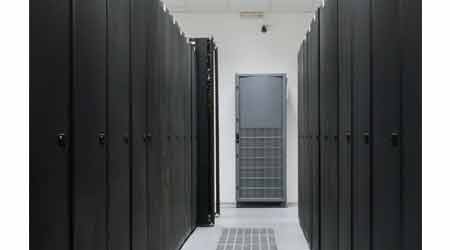Challenge of Quantifying Value of Data Center Energy-Saving Options
Part 2 of a 3-part article on incentive programs offered by utilities and state energy offices to manage and control data center energy use
Identifying and quantifying the value of data center energy-saving options may be a challenge to many otherwise qualified energy practitioners. Virtualization, for example, works at the software level to concentrate tasks onto fewer servers, cutting server power load, power conditioning load (e.g., UPS), and attendant HVAC requirements. Merely discussing such an option requires a background in IT operations, a subject Brown says is often not part of an energy auditor’s lexicon. Even evaluating more sophisticated HVAC options (e.g., controls) may prove challenging to some energy engineers. Bottom line: Maximizing incentives may mean allocating more resources to both energy analyses and the configuration of the rebate applications that require them.
The first step toward securing data center incentives is an energy audit by a firm experienced in dealing with IT operations. The initial incentive to seek may be one that pays for part or all of such an audit. While many firms offering energy audits are skilled at finding ways to cut typical loads (e.g., lighting, HVAC), fewer deal with the specialized conditions and equipment found in data centers. Fortunately, specialized training is available via DOE’s Data Center Energy Practitioner (DCEP) certification program and several private data center training opportunities. Specifying that an auditor has such training or certification is one way to assure a quality audit. A good audit breaks the data centers into three pieces — IT load efficiency, power conditioning, and HVAC and controls — and examines efficiency measures specific to each piece.
Diane Tringali is a program director at Willdan Energy Solutions, an energy efficiency and sustainability consulting firm. “Data center energy efficiency, and managing the associated rebates, grants, and incentives, form one of our core competencies,” she says. “Any firm that claims to be able to help cut data center energy use needs to have people fluent in both the technology associated with IT services and its supporting cooling systems. Having IT operational experience and specialized training helps to gain the trust and interest of data center operators, whose buy-in is essential to achieving real energy savings, but for whom energy may be far less important than issues such as uptime and security.”
Even pricing of a data center energy audit may be different. Rather than the usual cents per square foot quoted for commercial buildings, other pricing factors need to be considered. “For instance, square footage, dollars per kilowatt of IT power load, and the number of systems that provide the power conditioning and cooling for the data center represent a more accurate price for a data center energy audit,” says Tejas Desai, Willdan’s program director of engineering.
A good audit also looks at how a data center is metered. Some data centers serving cable TV and cell phone systems (called “switch hotels”) may house many firms offering digital services; each is essentially a commercial tenant with its own submeter. When the landlord is (from the utility’s perspective) the only actual power customer, distributing a rebate for upgrades impacting several tenants can get complicated. While rebates typically go to the company name seen in the electric bill (not to tenants), many utilities have procedures to allocate rebates for work partially (or fully) bankrolled by tenants. The consultant handling the rebate paperwork should be well versed in the utility’s rebate rules to avoid conflicts over shared incentives.
Related Topics:














